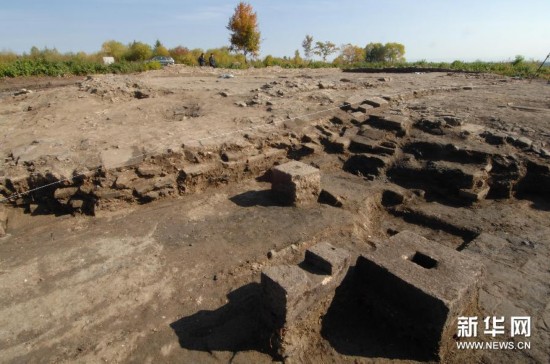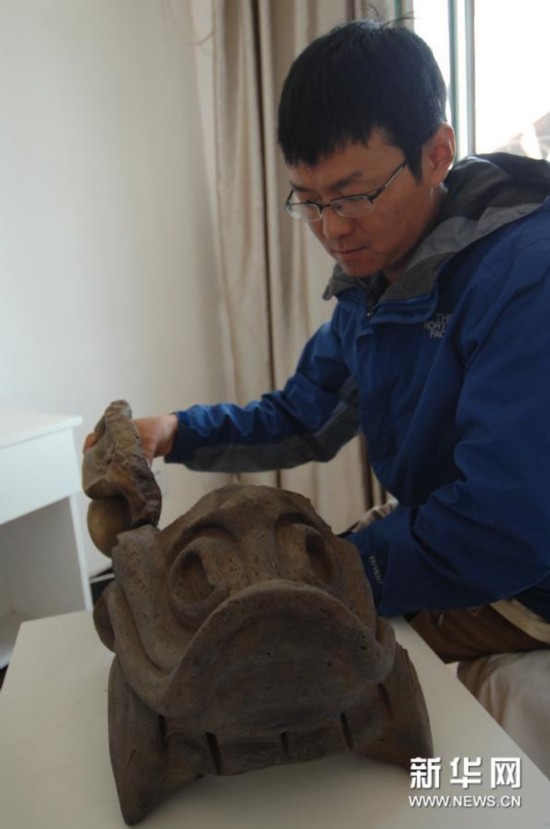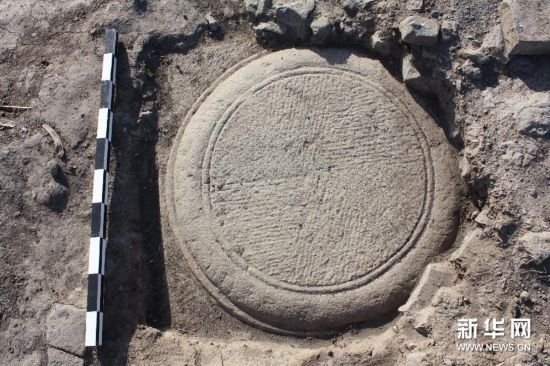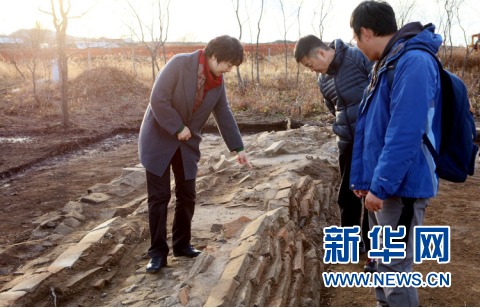800-year-old temple adds new facet to Changbai Mountain
The ruins of an 800-year-old royal temple at the foot of Changbai Mountain was recently verified to have been established in the middle of the Jin Dynasty (1115-1234), making it the oldest temple used by the royal family for worship at the Changbai Mountain.
Leading archaeologists nationwide based their analysis on previously unearthed antiques and historical records and came to their final conclusion at a meeting in the Er'daohe town at the foot of Changbai Mountain.
 |
|
Many stone relics are excavated at the Baoma town ruins, the oldest temple at which royal families of the Jin Dynasty (1115-1234) held worship ceremonies. This file photo was taken on Sept 26, 2014. [Photo by Liu Shuo/xinhuanet] |
The ruins of Baoma, where the temple is located, is on a hill in Antu county, 50 kilometers south of the summit. On a sunny day, the town can see Changbai Mountain quite clearly.
Many ancient Chinese emperors performed mountain worship ceremonies (called fengchan in Chinese, meaning worship of heaven and earth) to ensure a dynasty's fortunes.
For many decades, archaeologists in China and elsewhere lacked adequate knowledge about Changbai Mountain's history and culture, and for many people, the mountain was considered a scenic spot only.
The discovery of the Baoma town site, to some extent, helps to fill that void.
 |
|
This file photo from Sept 26, 2014, shows an archeologist putting together two parts of an unearthed antique from the ruins of Baoma. [Photo by Liu Shuo/xinhuanet] |
"The ruins of Baoma plays such a crucial role in helping us understand the history of Changbai Mountain, and for our academic research," said Fan Enshi, from the Institute of Chinese Borderland Studies affiliated with the Chinese Academy of Social Sciences.
The ruins were first excavated in 2013, and archaeologists have found many delicate bricks and other building parts.
"[These] bricks and building parts our team has dug out have the distinctive characteristic of being from the Jin Dynasty," said Zhao Junjie, from the research center for Chinese frontier archaeology at Jilin University and also the team leader for the Baomao archaeological discovery.
 |
|
A plinth, with a diameter of 100cm, is unearthed in the northwest corner of the Baoma town site. This file photo was taken on Sept 26, 2014. [Photo by Liu Shuo/xinhuanet] |
The Tang Dynasty (618-907) and Song Dynasty (960-1279) saw emperors use jade tablets inscribed with worship essays, some of which were excavated on Mount Tai, an important official ritual site in use over the same time period.
Earlier this year, Zhao's team unearthed a couple of ruins with white jade tablets, on which were carved characters such as "Jin" and "Kui Chou", the year the worship ceremony was held.
According to Zhao, this information matched the description of the royal temple in Jin records.
"It's priceless," said Li Ji, head archaeologist of the Palace Museum, regarding the well-preserved Baoma ruins.
 |
|
Leading national archaeologists and government officials from the Jilin provincial cultural heritage department hold a meeting to conclude that the ruins of Baoma were established during the Jin Dynasty, Oct 24 to 25, in Er'daohe town at the foot of Changbai Mountain. Previously, experts had thought the ruins belonged to Balhae in the northern Korean Peninsula (698-926). [Photo/xinhuanet] |
As the ruins were buried in only soil and no other buildings were built on top of it, the structure has not shifted much since the Jin Dynasty, and now they have found antiques to match the historical records, according to Li.
"All of these are rarely seen just in one site," Li added.
The Jin Dynasty began in 1115 with Wanyan Aguda who led his Nuzhen (Jurchen) tribe to inhabit what is now Northeast China, and they eventually swept across Northern China, establishing a boundary with the Southern Song Dynasty (1127-1280) around the Huai River. Wang Xiaokun, assistant professor at the history department of Renmin University, said the architectural style of Baoma is pretty similar to that of the inland region, and that it reflects a cultural blending and acceptance of Han culture.
 |
|
Experts and government officials pay a visit to the Baoma site, in An'tu, 50 kilometers away from Changbai Mountain, in Northeast China's Jilin province. [Photo/xinhuanet] |
"The Jin Dynasty was governed by a non-Han political power, and was greatly influenced by Han's culture," Wang said. "So I think it is a distinctive character of Chinese culture."
A museum is said to be built around the Baoma ruins with the offering of worship ritual services and other cultural related facilities in the near future.
"We willdevelop culture tourism on the site with zero tolerance for damaging it," said Li Yiyang, from the management body of Changbai Mountain scenic spot.




 Mail
Mail Print
Print Larger
Larger
